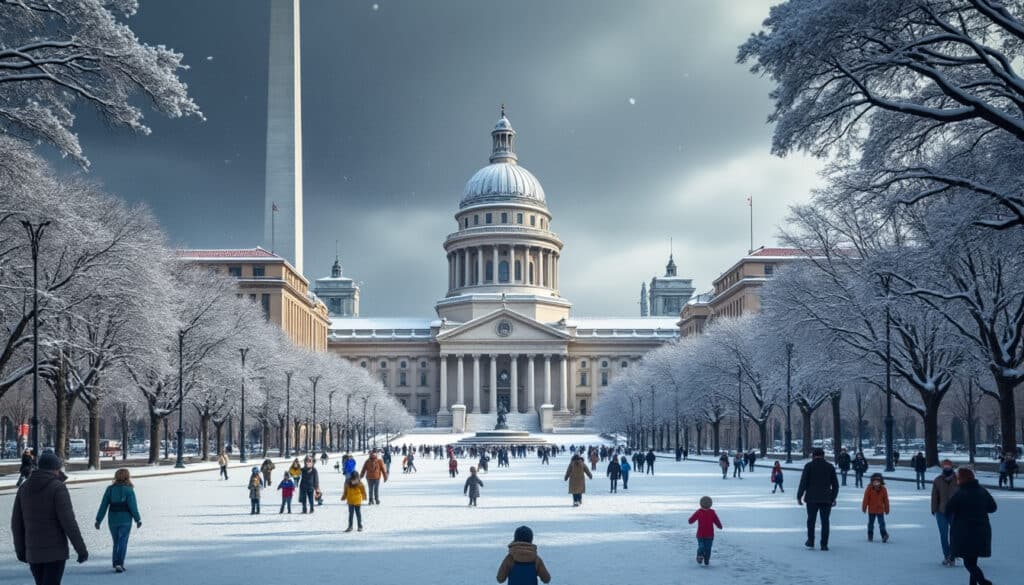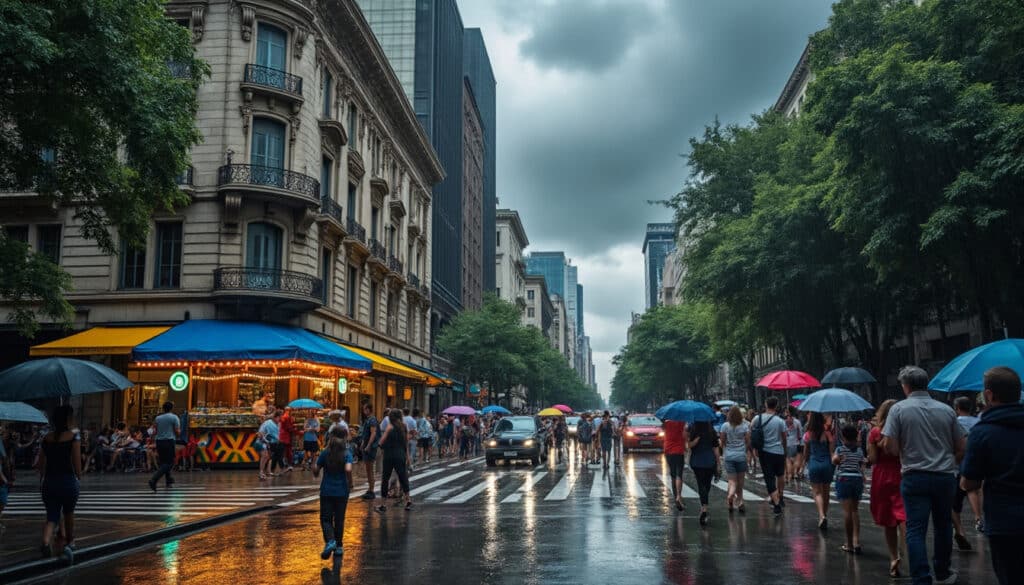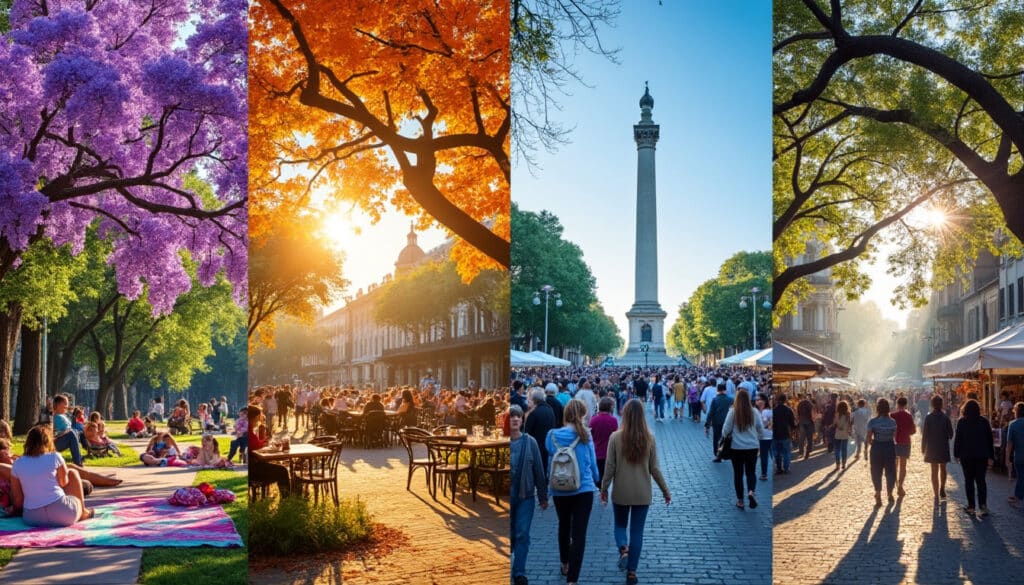Buenos Aires, with its rich tango culture and vibrant city life, offers a distinct climate experience throughout the year. The city’s weather varies significantly between the warm, humid summers and the mild, fog-kissed winters. Understanding Buenos Aires’ weather patterns can help both residents and travelers make the most of their time in this dynamic Argentine capital. From planning outdoor events to dressing appropriately, being informed about the weather can enhance your Buenos Aires experience immensely.
January in Buenos Aires: Embracing the Summer Heat
January marks the peak of summer in Buenos Aires, characterized by very warm temperatures and high humidity. During this time, the city often experiences temperatures that rise up to an average maximum of 30.1°C (86.2°F), making January the hottest month of the year. Nighttime brings some relief with temperatures dropping to around 20.2°C (68.4°F), yet the air remains moist, sustaining a humidity level of about 63%.
The daily sunshine extends for about 14 hours, providing ample daylight for the many outdoor festivities and vibrant street life that Buenos Aires is famous for. However, the heat can sometimes feel oppressive, especially during the early afternoon heat peaks.
Summer in the city also brings frequent thunderstorms, a result of cooler southern winds clashing with the hot air, sometimes leading to heavy but brief rain showers. Precipitation in January averages around 134.4 mm, typically distributed over 8 days. These showers can bring a dramatic cool-down after a hot day, revitalizing both the air and the bustling city streets.
Interestingly, the sea temperature near Buenos Aires stays at a comfortable 22.5°C (72.5°F), making it just suitable for a refreshing swim. Local beaches and nearby coastal resorts are popular destinations for residents and tourists alike, seeking respite from the urban heat.
Tourists visiting Buenos Aires in January should be prepared for the warmth by dressing in light, breathable fabrics and staying hydrated. Using public transportation might be more comfortable during early mornings or late afternoons to avoid peak heat hours. When planning outdoor activities, it’s wise to factor in occasional rain disruptions.
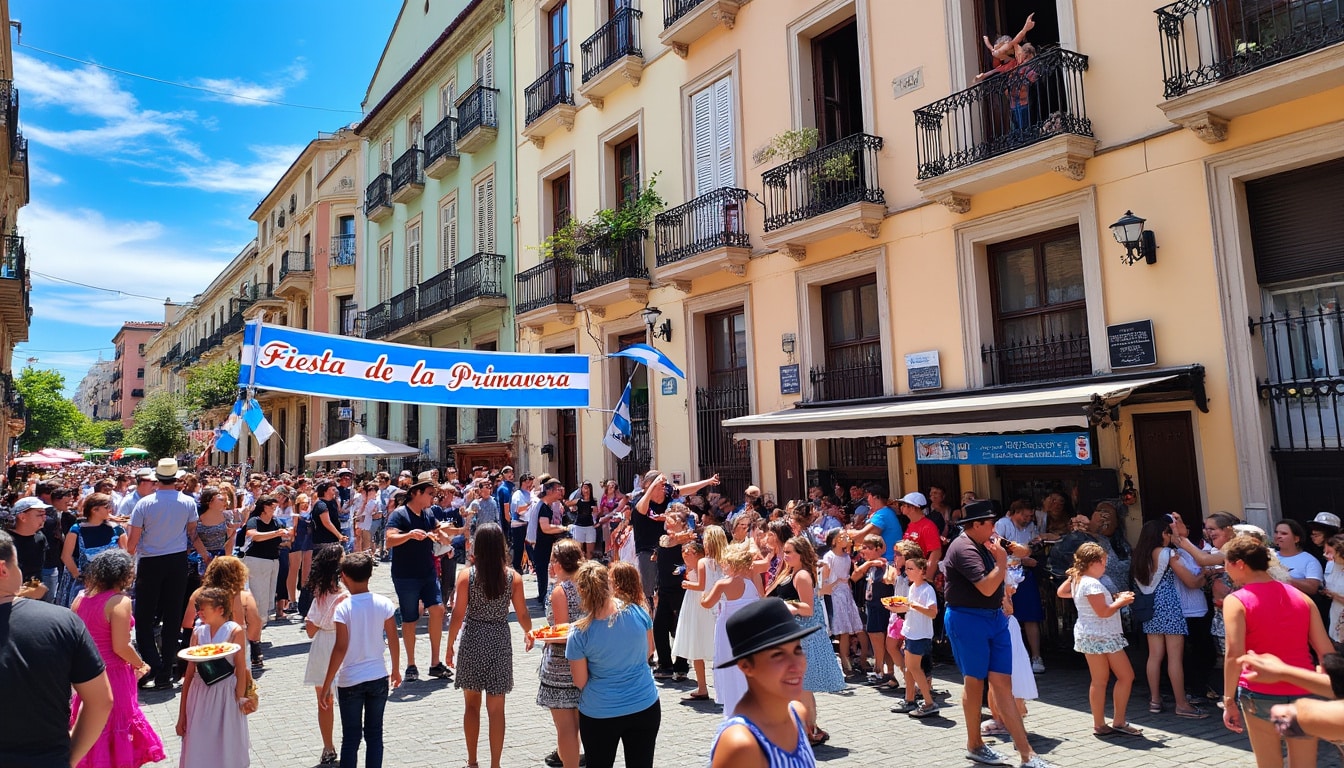
Famous January Events
January also hosts numerous events, capitalizing on the sunny weather. One of the most anticipated is the Buenos Aires Tango Festival. This event attracts dance enthusiasts from all over the world, lured by the rhythms of the city. Additionally, the multitude of open-air concerts and art exhibitions take full advantage of the extended daylight.
If planning a trip to Buenos Aires in January, preparation is key. Keep track of weather updates using reliable sources like AccuWeather, Weather.com, or The Weather Channel for accurate forecasts. These platforms offer real-time predictions, which are crucial for navigating the city safely and comfortably during this hot season.
Winter in Buenos Aires: Exploring June Weather
As winter approaches Buenos Aires in June, the city undergoes a dramatic weather transition. Temperature averages during this time hover around a mild 12.4°C (54.3°F) during the day, while nights can feel cooler, dipping to about 8.4°C (47.1°F). Winter in Buenos Aires is characterized by alternating periods of brightness and dampness, with fog often blanketing the city in a mysterious charm.
June typically records the least amount of rainfall, averaging about 61.5 mm over 5 days. This is a significant decrease compared to the wetter summer months, offering more dry days for exploring the city’s rich cultural heritage and outdoor activities. Despite the colder weather, Buenos Aires retains its lively atmosphere with numerous events and celebrations throughout the season.
A phenomenon worth noting is the north wind, known locally as the “Pampero,” which occasionally brings unexpected warmth during the winter months. This wind can elevate temperatures above normal winter averages, providing a temporary yet welcome relief from the chill.
Because snow is extremely rare in Buenos Aires, even the coldest winter days are mild enough for outdoor exploration. The historical districts, adorned with charming cafes and street musicians, provide an inviting ambiance, perfect for leisurely strolls.
Visitors to Buenos Aires in June should pack versatile clothing, including a warm jacket for the evenings and lighter attire for the daytime, especially if the Pampero wind is forecasted. Keeping an eye on updates from Weather.com or BBC Weather will ensure timely information and advice about any weather anomalies or changes.
Cultural Insights
June in Buenos Aires also invites cultural enthusiasts to dive into the local scene. Museums and galleries offer shelter from the weather, providing rich insights into Argentine history and art. Meanwhile, cozy cultural cafes host storytelling evenings and local music, offering a warm atmosphere against the winter backdrop.
September in Buenos Aires: Welcoming Spring
With the arrival of September, Buenos Aires embraces the fresh awakening of spring. This month is synonymous with flourishing jacaranda trees and an overall charming ambiance. Temperatures rise gently, with daytime averages around 15.2°C (59.4°F) and lows dropping to approximately 10.6°C (51°F) at night.
Despite the inconsistent weather, September sees an increase in sunshine with about 6 hours of sun per day. The city experiences moderate rainfall, measuring around 80.6 mm over 6 days. These showers, coupled with the blossoming scenery, cultivate a rejuvenating atmosphere as Buenos Aires starts shedding its winter cloak.
The milder temperatures make it an ideal time for outdoor activities. Residents and visitors alike can be spotted enjoying alfresco dining and exploring the city’s many parks and gardens. The warmth, paired with vibrant blooms, transforms Buenos Aires into a colorful haven.
The weather during September is conducive for various cultural activities. Local festivals often highlight Argentine heritage through traditional music and dance, adding a rhythmic heartbeat to city life.
Packing and Planning 🌸
- 🌂 Pack an umbrella or raincoat for sudden showers.
- 🕶 Bring sunglasses for the sunnier days.
- 👒 Hats or caps can add style while providing sun protection.
- 💧 Stay hydrated with a reusable water bottle.
For those planning to travel during this delightful month, keeping track of daily forecasts via Weather Underground and MeteoEarth will provide essential insights, ensuring a comfortable visit.
November: The Bloom of Summer
November in Buenos Aires is viewed as a preamble to the more intense summer months, with temperatures making a gradual climb. The average temperature hovers around a comfortable 21°C (69.8°F), with maximums reaching up to 26°C (78.8°F). The increasing daylight, with approximately 14 hours, encourages vibrant city life.
This month sees a drop in rainfall compared to early spring, averaging 117.6 mm over 7 days, which aligns with the easing transition from spring to summer. With humidity levels averaging 62%, the weather remains pleasant, although some days flirt with higher heat and more intense conditions.
November is celebrated for its visual splendor. The purple jacaranda blooms reach their peak, adding a splash of color to the city’s streets and parks. This natural display is a powerful draw for both locals and tourists, serving as a favorite backdrop for photographers and social media enthusiasts.
What to Expect and Experience 🌼
In addition to its natural allure, November offers a plethora of events. Open-air concerts continue through the month, and the numerous art festivals celebrate the regional and contemporary art scenes. These events, coupled with favorable weather, create an irresistible tapestry of experiences.
For those traveling in November, dressing in layers could be beneficial as temperature shifts can occur throughout the day. Additionally, choosing airy, light clothing during the day and having a shawl or light jacket for the evening will ensure comfort. Monitoring climate conditions via WeatherBug and Climacell will assist in planning for any spontaneous weather changes.
- 🎸 Attend an open-air concert
- 🎨 Explore art exhibitions
- 🌿 Visit Buenos Aires’ botanical gardens
Comparing Buenos Aires’ Climate Globally
The weather in Buenos Aires, with an average annual maximum temperature of 23°C (73.4°F), presents a relatively warm environment year-round. This climate allows Buenos Aires to be compared favorably with other global destinations.
In Athens, Greece, the climate mirrors Buenos Aires in terms of annual temperature averages, yet the Mediterranean climate there is explained through hot, dry summers. Meanwhile, Buenos Aires experiences its heat with more frequent rain and humidity.
Reykjavík, Iceland, sits in stark contrast with an annual average temperature significantly lower than Buenos Aires, at approximately 9°C (48.2°F). Its cold winters and cool summers illustrate a dramatically different climate backdrop.
Another comparative example is Boston, USA, with average annual temperatures of 16°C (60.8°F), showing noticeable seasonal shifts akin to New York. Conversely, Tokyo, Japan, has temperatures similar to Buenos Aires, experiencing warmer summers but milder winters.
Exploring Buenos Aires’ climate in the context of these international benchmarks helps highlight its unique characteristics. For more detailed insights into Buenos Aires’ weather patterns, including seasonal updates and tips for travelers, check documentation from platforms like MeteoGroup or Wunderground.
Table: Global Climate Comparison
| City | Average Annual Temperature 🌡️ | Summer Characteristics ☀️ | Winter Characteristics ❄️ |
|---|---|---|---|
| Buenos Aires | 23°C (73.4°F) | Warm, humid | Mild |
| Athens | 23°C (73.4°F) | Hot, dry | Mild, wet |
| Reykjavík | 9°C (48.2°F) | Cool | Cold, snowy |
| Boston | 16°C (60.8°F) | Warm | Cold |
| Tokyo | 21°C (69.8°F) | Hot, wet | Mild, dry |
Frequently Asked Questions
- What is the best time to visit Buenos Aires?
The ideal times to visit Buenos Aires are during spring (September to November) and autumn (March to May) when the weather is mild and pleasant. - How humid is Buenos Aires during the summer?
The humidity level typically ranges from 60% to 70% in summer, contributing to the warm feel of the air. - Does it snow in Buenos Aires?
Snow is extremely rare in Buenos Aires due to its mild winters, with the last significant snowfall recorded in 2007. - What should I wear in Buenos Aires during winter?
Winter apparel in Buenos Aires should include a warm jacket for cool evenings and lighter layers for warmer days. - Is Buenos Aires prone to heavy rainfall?
While rainfall can be heavy, particularly in spring and summer, it is usually brief. Transient floods can occur, so staying updated on weather forecasts is advisable.
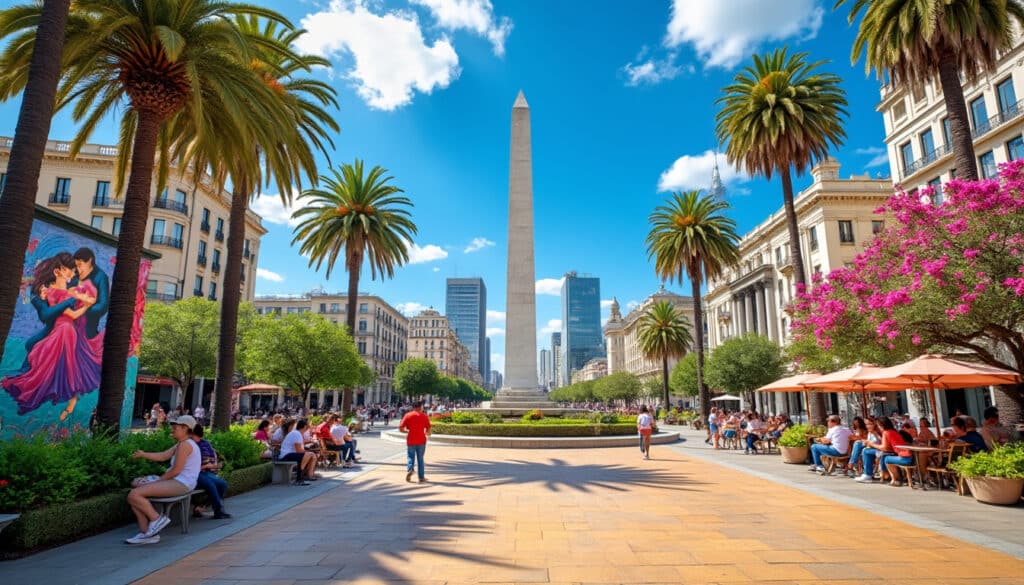
Climate & Weather in Buenos Aires
The mesmerizing city of Buenos Aires, where the tango rhythms and historic architecture intertwine, offers a climate as multifaceted as its vibrant culture. As Argentina’s bustling capital, it entices travelers year-round with a warm, humid subtropical climate. Visitors wander through…
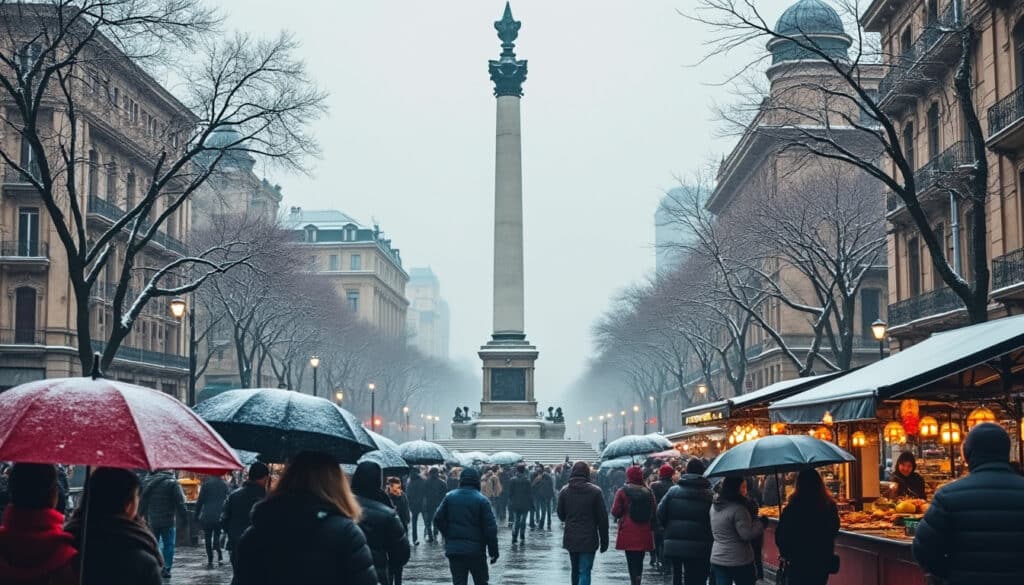
When thinking about Buenos Aires, images of vibrant tango, bustling streets, and warm climates might come to mind. However, the story of Buenos Aires includes the lesser-known cold weather that grips this fascinating city during the winter months. This unique…

Flooding and natural risks in Buenos Aires
Buenos Aires, a city known for its vibrant culture and bustling streets, faces significant challenges from natural risks, particularly flooding. As climate patterns shift and urban areas expand, the frequency and intensity of these occurrences have escalated, affecting both the…
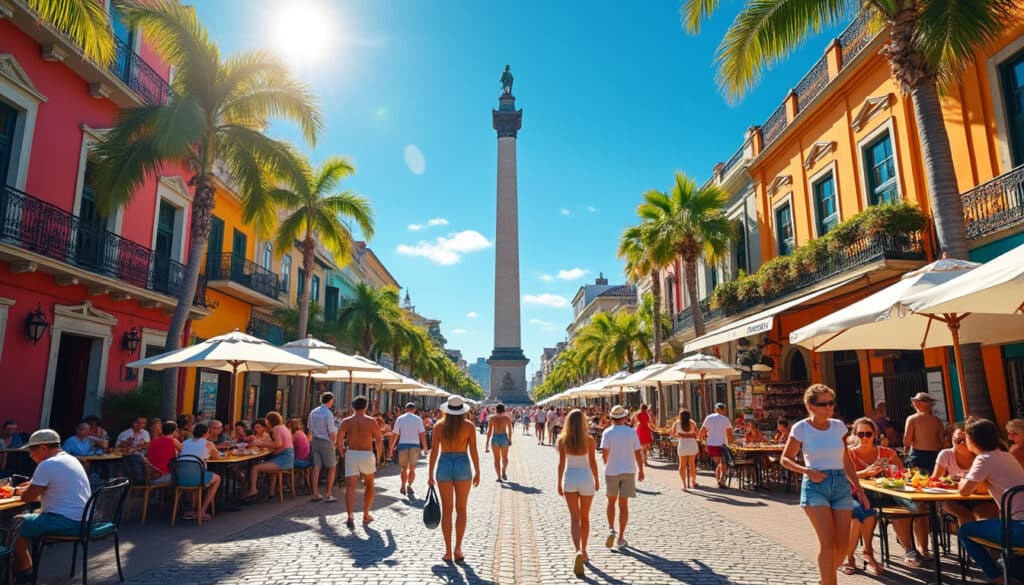
The vibrant city of Buenos Aires is not only famous for its tango beats and cultural richness but also for its unique weather patterns that shape the life of its residents and captivate the imagination of visitors. As we step…

Is Buenos Aires warm throughout the year?
Buenos Aires, the bustling capital of Argentina, with its lively tango rhythms and vibrant culture, poses a climate allure just as engaging as its colorful streets. As one of South America’s popular tourist destinations, understanding the city’s weather patterns remains…
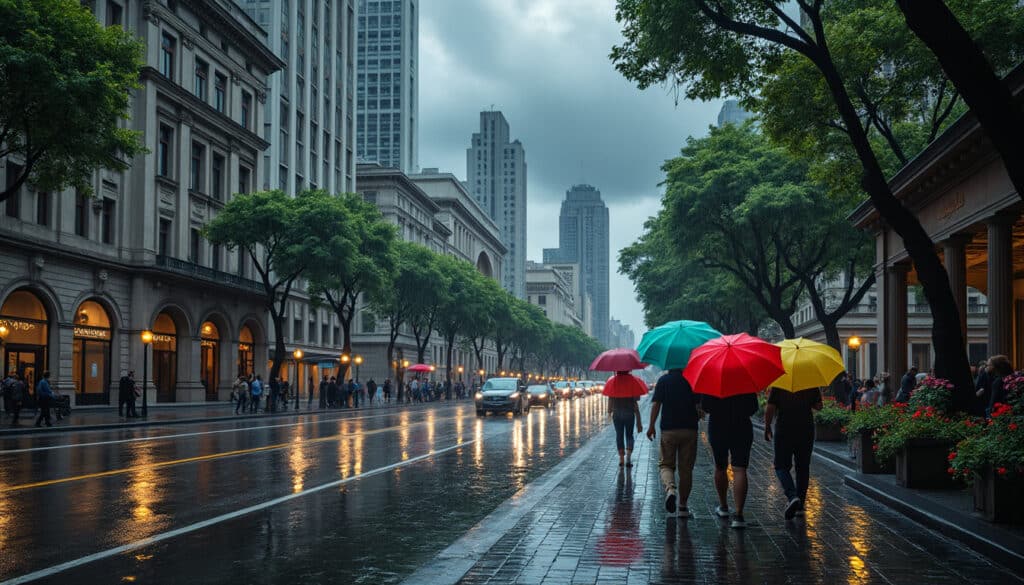
Rain and precipitation in Buenos Aires
Buenos Aires, a bustling metropolis known for its vibrant culture, tango music, and exquisite cuisine, experiences a complex and diverse climate that might surprise both residents and tourists. This city, located on the southeastern coast of South America, is graced…

Buenos Aires, the vibrant capital of Argentina, is bustling with life around the clock. Understanding the city’s sunrise times can significantly enhance one’s experience, whether you’re planning a morning run at the costanera, a photo session at the iconic Obelisco,…
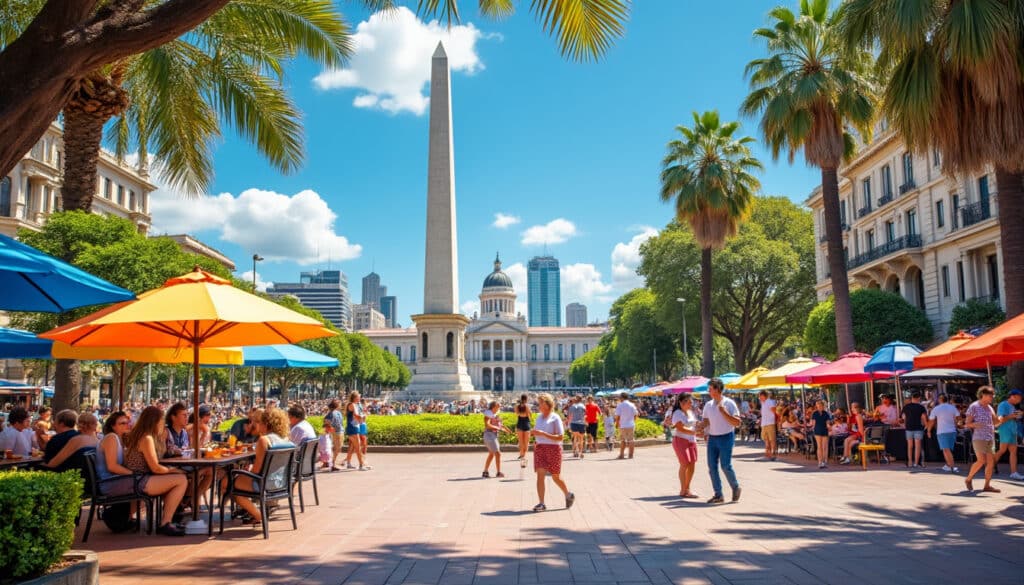
Buenos Aires, the vibrant heart of Argentina, is a city where the rhythm of tango dances in harmony with the ebb and flow of its varied climate. The city’s temperatures are a fascinating dance between the warmth of summer sun…
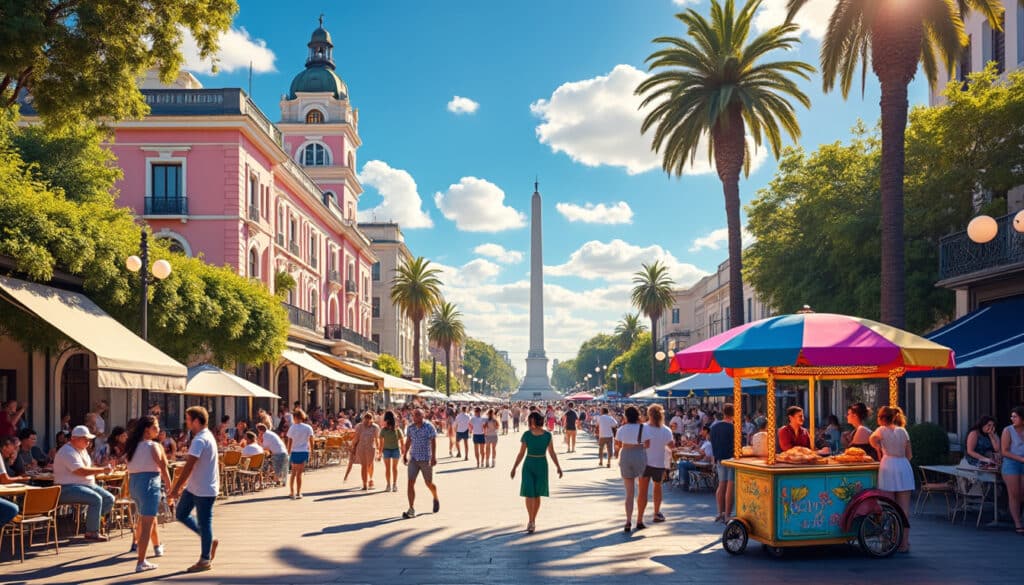
What is the weather like in Buenos Aires?
Buenos Aires, known for its vibrant culture and lively atmosphere, boasts a weather pattern that is as varied as the tango rhythms that echo through its streets. Travelers arriving in the city are often greeted by a climate that is…


